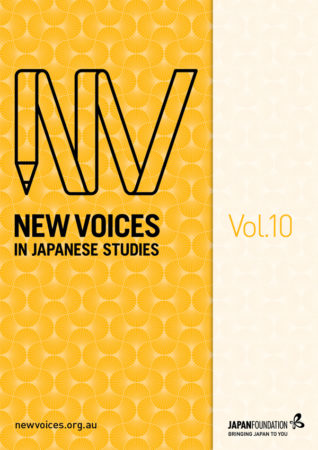
Volume 10
Guest Editor: Penny Bailey
Published June, 2018
ISSN 2205-3166
https://doi.org/10.21159/nvjs.10
© The Japan Foundation, Sydney, 2018

This paper is a biographical case study that explores the distinct experiences of three Australian-born Japanese (hereafter, Nikkei-Australians) who volunteered for Australian military service during World War II: Mario Takasuka, Joseph Suzuki and Winston Ide. It examines the social and political context in which these soldiers lived, concluding that they faced a disconnect between the way they were viewed by the government, their local communities and themselves. Notions of identity and nationalism are also explored in the context of World War II and the White Australia Policy, and are compared with the experiences of non-European soldiers in Australia and Nikkei soldiers abroad. The paper also highlights the ambiguous position of Nikkei-Australian soldiers with respect to military enlistment. At the time, legislation allowed for Nikkei-Australians to be variously classified as loyal citizens capable of enlistment, as not sufficiently Australian’ for duty, or as enemy aliens, depending upon how it was applied in each case. Because there was no uniform approach within the government for applying these laws, the experiences of Nikkei-Australians vastly differed, as illustrated by the stories of the individuals profiled in this study. These stories are important as they add to the growing body of knowledge around non-white Australians who served in World War II, and remind us of how the pro-white, anti-Japanese atmosphere within Australia at the time affected those within the community who did not fit the mould of the White Australian ideal.
With the increasing importance of the US-Japan Security Alliance amidst heightening regional tensions between Japan and its neighbours, the debate concerning the US base presence in Okinawa has polarised many and garnered significant attention in scholarship and the media. Using a qualitative approach, this article analyses the political rhetoric of Takeshi Onaga, who assumed office as Governor of Okinawa in December 2014. The article finds that Onaga uses an essentialist notion of Okinawan cultural identity and history as a tool for political gain to further an anti-base agenda. It contributes a new perspective to the literature on US bases in Okinawa by shedding light on the convergence of representations of contemporary Okinawan identity, ethnicity and history in the local Okinawan political debate. Further, in drawing on examples from Onaga’s Twitter and YouTube accounts, the article responds to the scarcity of literature on the relationship between social media and politics in Japan.
This paper focuses on how social meanings indexed by language use in the real world can be recontextualised in telecinematic texts such as anime to construct and convey different aspects of a character’s identity. In a case study of the science-fiction anime series, From the New World (Shinsekai Yori; 2012—13), the paper analyses three corpora comprised of dialogue from the series in order to shed light on the discursive construction of the non-human character Squealer. A non-human character was selected to minimise the influence of preconceptions about identity. Drawing on Androutsopoulos’s (2012) three-level film analysis framework and Bucholtz and Hall’s (2005) identity framework, the approach incorporates both computerised and manual discourse analysis. The computer-facilitated keyword analysis provides initial insights into the character’s demographic information and speech style, showing the key linguistic features used by the character’s species, and by extension, the focal character. This is complemented by a detailed analysis of dialogue from selected scenes which shows how various aspects of the character’s identity are expressed using different linguistic devices in different contexts. The analysis demonstrates that shifts between the use and non-use of certain linguistic features serve to foreground different aspects of a character’s identity—namely, stances and presentational personae. By integrating corpus linguistic analysis with scene-based analysis drawing on sociolinguistic concepts, the study shows how we can gain insights into telecinematic characters’ identities through language. The paper also highlights issues encountered in applying corpus linguistic methodologies to analysis of Japanese language, which may be of use to future researchers and software developers in this area.
This paper will show the ways in which authors of shōnen (boys’) manga can offer representations of gender performance that depart notably and significantly from the conventional framework which characterises many shōnen manga works (the shōnen framework’). It does this through a comparative analysis of gender performance in two shōnen manga series: Noragami [2010—], by female author duo Adachitoka, and Akame ga Kill! [2010—16], by male authors Takahiro and Tetsuya Tashiro. The paper seeks to demonstrate how the authors of Noragami have been able to subvert the gendered framework of shōnen manga while still writing within the genre. Examples of non-conventional gender performance in the female-authored work include resistance to gendered power dynamics and parody of traditional gender roles. These departures do not always reject the shōnen framework altogether, but instead present new ways for gender performance to be represented within it. In straddling the line between conforming to and subverting shōnen tropes, Noragami shows the potential for texts to shape and contest ideas about gender identity within a genre that is still dominated by hegemonic masculinity.
